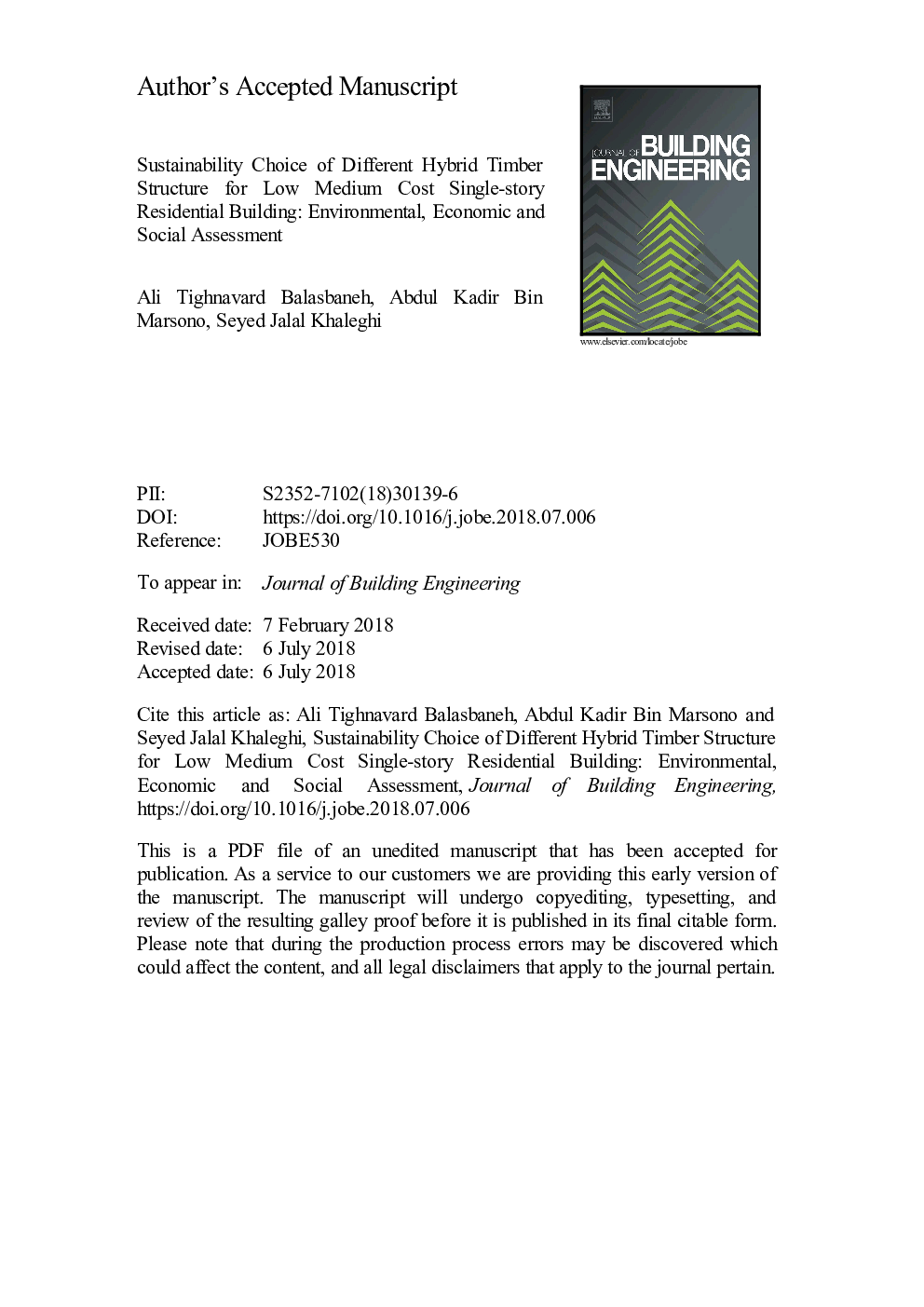| Article ID | Journal | Published Year | Pages | File Type |
|---|---|---|---|---|
| 6749690 | Journal of Building Engineering | 2018 | 30 Pages |
Abstract
The impact of different hybrid timber building construction on three different categories namely: environment, economic and social is analyzed in this research. Five types of hybrid timber structure have been chosen in this study toward finding the most optimum choice for Malaysian low income housing. The base material of all case studies are wood and only main frame of structures are different. The environmental impact of each individual design encompasses material extraction, transportation, construction, maintenance and end-of-life phases. The life cycle aspect of current research is evaluated for global warming potential (GWP), human-toxicity potential (HTP), eutrophication (EP), fossil depletion (FDP), acidification (AP), life cycle cost (LCC) and social life cycle assessment (SLCA). The result revealed the different emissions between various structural schemes in all stages. Decision making process was oriented to sustainability as the hybrid steel stud & timber (T2) generally performed better than timber structure with concrete, LVL or GLT with steel. Particularly, T2 had the lowest GWP (3.31E+3â¯kg-CO2-eq) and LCC (212,750 MYR) which was the lowest in comparison with other hybrid timber structures. Also the result of job creation revealed that timber sector will provide higher wage not only for existing employees but for timber sector regarding creating higher job possibility. The sensitivity analysis was accomplished on electricity usage and assumed instead of full fossil fuel mix electricity applied for acquiring construction material on mill. The result shows almost 15-30% less GWP emission for all building structure.
Keywords
Related Topics
Physical Sciences and Engineering
Engineering
Civil and Structural Engineering
Authors
Ali Tighnavard Balasbaneh, Abdul Kadir Bin Marsono, Seyed Jalal Khaleghi,
